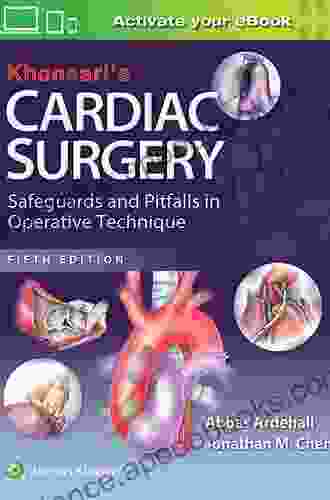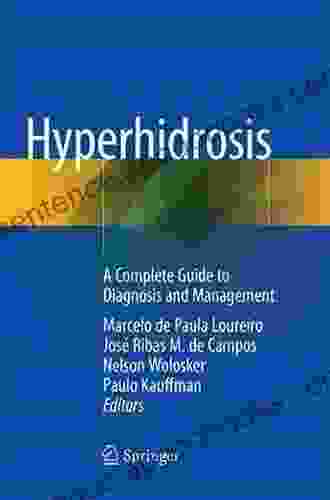Safeguards and Pitfalls in Operative Technique

As a surgeon, navigating the complexities of operative technique is paramount to ensuring patient safety and achieving optimal outcomes. Armed with the knowledge and understanding of potential safeguards and pitfalls, surgeons can mitigate risks and enhance the success of their procedures.
In this comprehensive guide, we delve into the intricacies of operative technique, exploring the essential safeguards that protect patients and examining the common pitfalls that can jeopardize outcomes. By meticulously following these principles and recognizing potential hazards, surgeons can elevate their skills and become masters of their craft.
4.5 out of 5
| Language | : | English |
| File size | : | 81726 KB |
| Text-to-Speech | : | Enabled |
| Screen Reader | : | Supported |
| Enhanced typesetting | : | Enabled |
| Print length | : | 1180 pages |
Essential Safeguards
- Sterile technique: Upholding the principles of sterile technique is the cornerstone of preventing surgical site infections. It involves maintaining a sterile field throughout the procedure, using sterile instruments and materials, and adhering to proper surgical attire.
- Surgical planning: Meticulous preoperative planning is crucial for anticipating potential challenges and avoiding intraoperative surprises. This includes studying the patient's medical history, imaging studies, and operative field, as well as anticipating potential bleeding, anatomical variations, and surgical complexities.
- Patient positioning: Proper positioning of the patient during surgery ensures optimal access to the surgical site, prevents nerve damage and pressure ulcers, and facilitates postoperative recovery. Surgeons must carefully consider the ergonomics of the surgical position and use appropriate positioning devices.
- Adequate anesthesia: Close collaboration with the anesthesiologist is essential for providing adequate anesthesia and pain control throughout the procedure. This includes selecting the appropriate anesthetic technique, managing fluid balance, and monitoring vital signs.
- Minimally invasive surgery: When feasible, employing minimally invasive surgical techniques can reduce tissue trauma, minimize blood loss, and accelerate postoperative recovery. Surgeons should consider the advantages and disadvantages of minimally invasive approaches based on the specific procedure and patient factors.
- Hemostasis control: Meticulous hemostasis throughout the surgery is crucial for preventing excessive bleeding. This involves identifying sources of bleeding, employing electrocautery, ligatures, or hemostatic agents, and ensuring adequate drainage.
- Tissue handling: Gentle handling of tissues during surgery is paramount for preserving function and preventing damage. Surgeons should avoid excessive traction, crushing, or thermal injury, and use atraumatic instruments and techniques.
Common Pitfalls
- Failure to appreciate the patient's anatomy: Not fully understanding the patient's unique anatomy, including variations and abnormalities, can lead to misdiagnosis, misplacement of incisions, and complications during surgery. Surgeons should carefully review imaging studies and conduct thorough physical examinations.
- Inadequate hemorrhage control: Failure to promptly and effectively control bleeding can lead to severe complications, including hypovolemic shock. Surgeons must be vigilant in identifying sources of bleeding and employing appropriate hemostatic measures.
- Misidentification of structures: Misidentification of anatomical structures can result in damage to vital organs, nerves, or blood vessels. Surgeons must exercise utmost caution during dissection and ensure accurate identification of structures before cutting or manipulating them.
- Surgical site infections: Breaches in sterile technique or insufficient prophylactic measures can lead to surgical site infections. Surgeons must adhere to strict sterile protocols and administer appropriate antibiotics when indicated.
- Inadvertent nerve damage: If not careful, surgical procedures can cause inadvertent damage to nerves, which can lead to sensory or motor deficits. Surgeons should meticulously dissect and manipulate tissues, especially in areas where nerves are known to travel.
- Postoperative pain: Inadequate pain management can significantly impact the patient's recovery and satisfaction. Surgeons should prescribe appropriate pain medications and employ non-pharmacological pain-relieving methods, such as nerve blocks or local anesthetics.
- Oversights or omissions: Failure to complete an operation thoroughly or skipping essential steps can compromise the outcome. Surgeons must follow established protocols and meticulously perform every necessary procedure.
Keys to Mastery
Mastery of operative technique requires a combination of knowledge, experience, and unwavering attention to detail. Surgeons who consistently apply the principles outlined in this guide and proactively address potential pitfalls will elevate their surgical skills and achieve exceptional patient outcomes.
Continuous learning, regular surgical practice, and a strong focus on patient safety are the keys to maintaining surgical proficiency. Surgeons should actively seek opportunities for professional development, study surgical techniques from experts, and engage in simulation training to refine their skills.
Effective communication with patients, families, and colleagues is also crucial for successful surgical outcomes. Surgeons must provide clear explanations of the procedures, obtain informed consent, and foster a collaborative relationship with the entire healthcare team.
Navigating the intricacies of operative technique is an ongoing journey for surgeons. By embracing the safeguards and recognizing the pitfalls, surgeons can mitigate risks, enhance patient outcomes, and achieve surgical excellence. The principles outlined in this guide provide a roadmap for surgical success, enabling surgeons to perform with confidence and deliver the highest quality of care to their patients.
4.5 out of 5
| Language | : | English |
| File size | : | 81726 KB |
| Text-to-Speech | : | Enabled |
| Screen Reader | : | Supported |
| Enhanced typesetting | : | Enabled |
| Print length | : | 1180 pages |
Do you want to contribute by writing guest posts on this blog?
Please contact us and send us a resume of previous articles that you have written.
 Book
Book Novel
Novel Page
Page Chapter
Chapter Text
Text Story
Story Genre
Genre Reader
Reader Library
Library Paperback
Paperback E-book
E-book Magazine
Magazine Newspaper
Newspaper Paragraph
Paragraph Sentence
Sentence Bookmark
Bookmark Shelf
Shelf Glossary
Glossary Bibliography
Bibliography Foreword
Foreword Preface
Preface Synopsis
Synopsis Annotation
Annotation Footnote
Footnote Manuscript
Manuscript Scroll
Scroll Codex
Codex Tome
Tome Bestseller
Bestseller Classics
Classics Library card
Library card Narrative
Narrative Biography
Biography Autobiography
Autobiography Memoir
Memoir Reference
Reference Encyclopedia
Encyclopedia Hubertine Auclert
Hubertine Auclert Wayne Money
Wayne Money Sara Henning
Sara Henning Morgan Deane
Morgan Deane Elizabeth Van Steenwyk
Elizabeth Van Steenwyk Elizabeth Massie
Elizabeth Massie Evan Placey
Evan Placey Edward Martinez
Edward Martinez Leigh Hearon
Leigh Hearon Elizabeth Fitzelle Nuti
Elizabeth Fitzelle Nuti Ronnie Burkett
Ronnie Burkett T Z Chowdhury
T Z Chowdhury Dylan Rodriguez
Dylan Rodriguez Daniel Jonah Goldhagen
Daniel Jonah Goldhagen Charles Gasparino
Charles Gasparino Rachel Bromwich
Rachel Bromwich Eloisa James
Eloisa James Nikki Sloane
Nikki Sloane Susie Tate
Susie Tate Wilkie Martin
Wilkie Martin
Light bulbAdvertise smarter! Our strategic ad space ensures maximum exposure. Reserve your spot today!
 Patrick RothfussFollow ·16.6k
Patrick RothfussFollow ·16.6k Jackson BlairFollow ·10.5k
Jackson BlairFollow ·10.5k Colt SimmonsFollow ·12.3k
Colt SimmonsFollow ·12.3k Jamie BlairFollow ·16.3k
Jamie BlairFollow ·16.3k Roland HayesFollow ·14.4k
Roland HayesFollow ·14.4k Stan WardFollow ·2k
Stan WardFollow ·2k Virginia WoolfFollow ·12.9k
Virginia WoolfFollow ·12.9k August HayesFollow ·9k
August HayesFollow ·9k

 Julian Powell
Julian PowellShetland Pony: Comprehensive Coverage of All Aspects of...
The Shetland...

 Cason Cox
Cason CoxHow Anaesthetics Changed the World: A Medical Revolution...
Imagine a world where surgery is an...

 Harold Powell
Harold PowellUnleash Your Inner Songwriter: The Ultimate Guide for...
Calling all aspiring songwriters!...

 Nikolai Gogol
Nikolai GogolUnleash Your Artistic Potential: Quick Draw Anatomy for...
In the dynamic and visually...

 Tim Reed
Tim ReedThe Rock 'n' Roll Life of Legendary Sax Man Bobby Keys
The Rock 'n' Roll Life...

 Damon Hayes
Damon HayesMoney Management Activities for Youth: A Guide to...
In an era marked by rapidly...
4.5 out of 5
| Language | : | English |
| File size | : | 81726 KB |
| Text-to-Speech | : | Enabled |
| Screen Reader | : | Supported |
| Enhanced typesetting | : | Enabled |
| Print length | : | 1180 pages |












